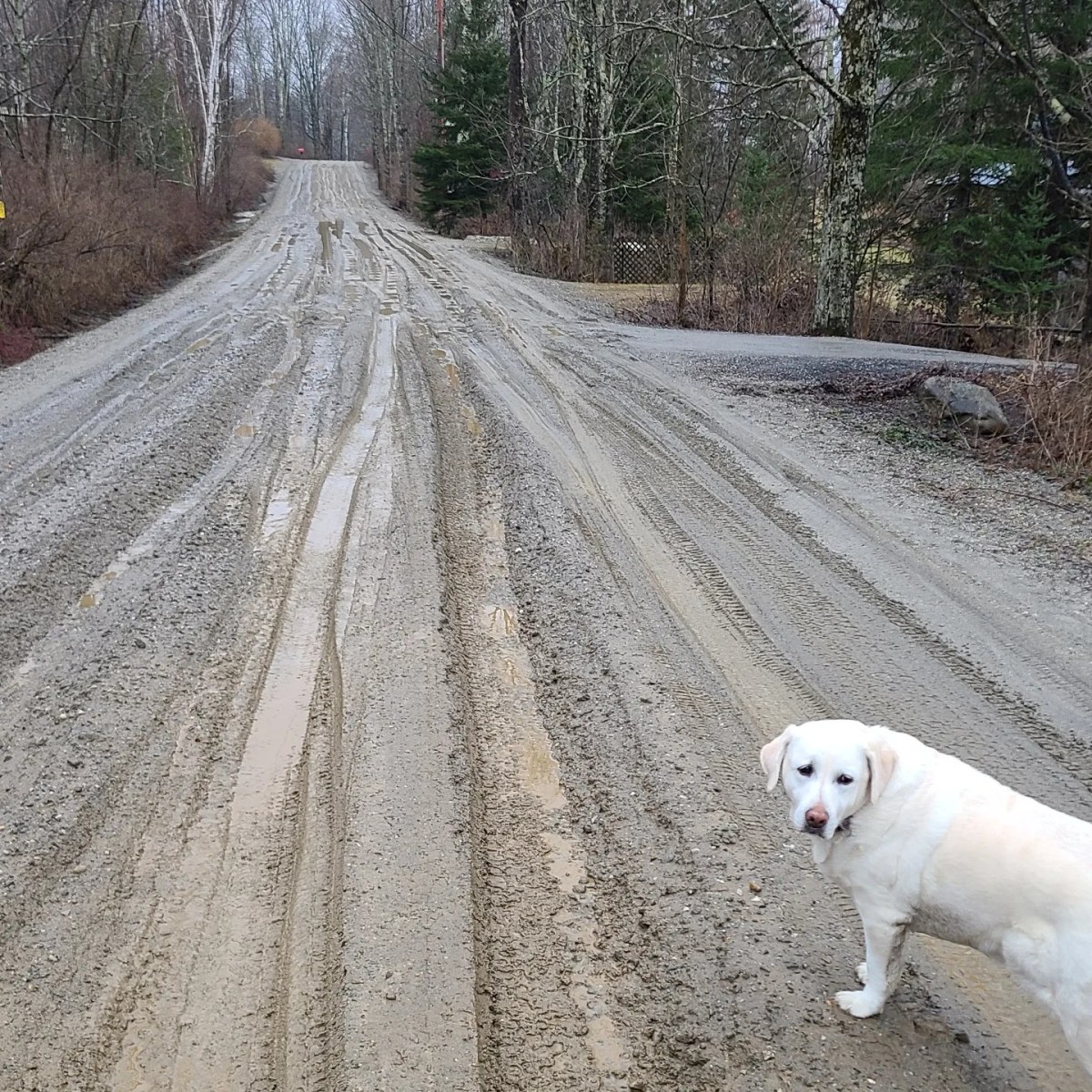Vermonters have noticed a surge in muddy roads this week, but the state’s warm winter has also caused an earlier, less consistent mud season.


Mud season is in full swing in Vermont.
Social media is awash with stories of stuck cars and photos of pothole-filled back roads. The Vermont State Police sent out a warning to drivers to avoid River Road in Duxbury due to muddy conditions. Schools in Waterbury adjusted their bus routes to get around difficult stretches of road.
But Vermont’s annual great thaw isn’t anything new; it’s why the term “mud season” exists. What is new is how warm winters and year-round wet weather are blurring the lines of when winter ends and mud season begins.
“Yes, it does look like mud season is starting earlier this year,” said National Weather Service meteorologist Scott Whittier.
He cautioned that there’s little science tracking mud levels throughout the state, but reports of the start of mud season are consistent with the data on temperature and precipitation that the weather service collects.
This winter has been the warmest on record by several metrics, according to weather service data.
“Every year, we have a series of freezes and thaws” of the ground as the temperature dips and rises, he said. This year, Vermont had “less freeze periods, and more thaw periods.”


Since the ground freeze was not as deep as previous years, the ground thawed out more quickly, leading to those muddy roads and trails, he said.
Longtime Vermonters have also noted the change. Gov. Phil Scott commented on this year’s mud season — or lack of a single, defined mud season — at a press conference on Thursday.
“As I remember, over the last 20 years, we’d have a freeze for the winter. We didn’t have all of these thaw-freeze-thaw scenarios that we’re experiencing today,” he said. “So we’ve been living like mud season, it seems like, all winter.”
Does that warm weather also make mud season worse? It’s complicated. There are several factors that go into the creation of mud: Springtime precipitation, snow melt from warming temperatures and the ground thawing. Although recent weeks have seen less precipitation than is typical for this time of year, Whittier noted that the past winter overall has been very wet.
Combined with a shorter time period of frozen ground, “more precipitation can seep into the ground, so when it thaws, there will be more saturation,” he said. “So the ground thaws out and the water starts slowly bubbling to the surface.”


He added that this time of year is typically considered the start of “spring flood season.” But since temperatures have been warm throughout the winter, it now looks like snowmelt-related flooding can happen anytime from December to April. That was the case this past December, when heavy rain, warm temperatures and melting snow led to major flooding in parts of the state.
For many Vermonters who rely on the state’s network of rural roads, muddy conditions are just another reality to adjust to.
Paige Lowry, coordinator of the state’s Meals on Wheels volunteers, said that a spirit of ingenuity and flexibility was necessary to ensure that volunteers can keep delivering essential food items to homebound Vermonters scattered across the state.
Mud season doesn’t affect many clients in urban areas such as Burlington, but the service provides meals to people in more rural communities such as Swanton, Sheldon and Bristol, she said. They tend to deal with those conditions on a case-by-case basis.
Lowry gave the example of one volunteer in Bristol who owns a car with a low undercarriage and knew that some of their clients lived down long dirt driveways. When rain hit the state, the service called each of the volunteer’s clients to see if they could leave a cooler at the end of their drive for a more convenient dropoff location.


In other cases, the client might call in to say, “‘I live on such and such, and I know I’m supposed to have Pam tomorrow, but my road is particularly bad and I have backup meals, so you don’t need to come,’” Lowry said.
The service has also been dealing with the year-round spate of bad weather. After flooding in the Middlebury area last summer, volunteers scrambled to find alternate routes around closed roads, she said.


But for the most part, as Vermonters, “we know it’s coming, and we greet it with a shrug,” she said.
“Most of the volunteers have been doing this for a while — and they’re used to driving in Vermont,” Lowry said.
Written by Erin Petenko for VTDigger